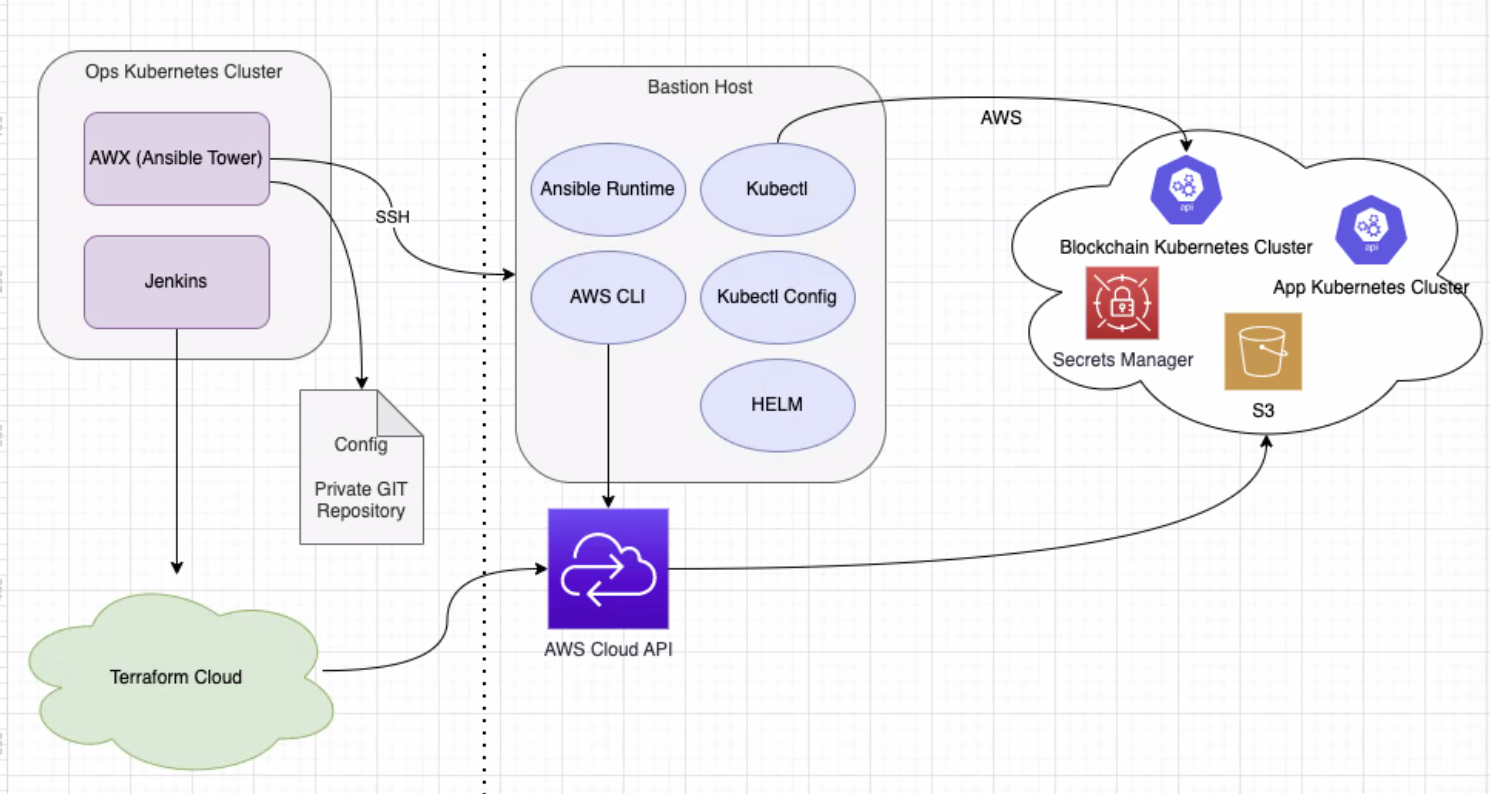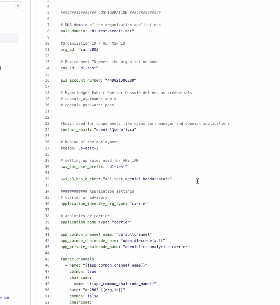openIDL Navigation
Page History
...
- go high level on the current architecture and how things work with operator
- focus on the ways we set up infra and installing AWS components
- focus: how we install the openIDL as a node
- left side operations tools
- right side openIDL node itself
- comparison from before and now
- components exist on a single account and could exist on sep accounts
- always one ops cluster per node?
- depends on how network is structured
- for IP, may be managing mult accounts at same time, may not make sense to have N number of ops clusters
- ansible and awx have multi tenant approach
- IP may manage nodes A, B, C, to minimize costs, dont need AWX on every account
- Privacy of whats on the cluster a dependency
- flexible with approach
- every provider or carrier has own requirements
- large carriers - security is important
- can people see if there are creds on a multi-tenant ops cluster
- doing all from single cluster, all managed from one place
- make sure it works the other way
- asked by big cos
- question of deployment
- creds in AWX are encrypted
- every org setting up, dedicated users and orgs
- whoever is in control of that user from AWX perspective is the only one with access (one way)
- like having a token
- accounts and creds in aws, not sure how implemented or consume as a service, most funct is multi-teneant on a logical level than pure DB level
- normal to have part of your data, account sitting somewhere on dedicated shared DB, sep by encryption, whatnot
- purely for flexibility
- every carrier can decide what they have in their infra
- nothing against that
- every will make own decisions, logical separation - security is high priority
- Ansible is pretty secure in that sense, still concerns can do more research
- not separating a carrier hosting a node vs carrier not hosting
- if smaller carriers were to use services of an IP to manage network, an IP could do that from a single ops cluster
- Jenkins - CI/CD
- some UI that can start certain actions, creating infrastructure, setting up AWS account (kub, etc.)
- have jenkins bundleing the infra as code (terraform scripts), uploading, starting the terraform script over from cloud
- works same as before, no major diffs, usually have in cloud, environment variables, pointing to AWS acount, access key, config aspects of kub clusters
- uses terraform IasCode, AWS cloud APIs, first step of the process, major diff, not installing nginex servers, moved nginex tool to create ingress in Kub, functionality delegated to ansible
- ansible - egress point for Kub cluster?
- tool, declarative lang
- allows us to config machines
- usually thru SSH
- oriented towards AWS, thoughts towards Azure
- not trying to make this cloud agnostic, implement best practices in each cloud
- tried to be cloud agnostic for ansible playbooks
- minimize what is specific to cloud
- moved creation of ingress controllers
- want to be able to support mult nodes on same cluster
- exp for cases with testnet or dev net
- many things done to enable multitenancy on same cluster
- ops cluster, HLF cluster
- devnet - exactly that setup, mult nodes running on same Kub cluster and then mult instances
- support diff domain names
- within same account and kub cluster, removes restrictions
- names MSPs needs to be
- more flex
- domain name of a node
- upcoming training workshops - first set of sessions is to set up infra
- what to cover in first sessions
- in terms of workshop - assume it starts with AWS
- other major change - confg repo
- previous implementation, going into same git repo
- all the ansible playbooks
- one repo
- flexible enough
- can have every branch diff carrier
- or sep git repo
- one of the carriers
- can pick the
- in config file - dont push passwords - all creds in awx
- mainly try to simplify the config in order to deploy fabric and openIDL apps
- bunch of configs like AWS account #, org ID, main domain name
- no need for a script - most things are templated already
- can overwrite whatever you like
- environment id - multitenancy
- can be config'd manually
- editing, knowing what/what not to change is important, may be useful to ID elements that need to be supplied
- idea to make it easier, minimize errors
- intermediate step
- documented inside
- another change, spawning and configuring clusters - dont use Kub jobs anymore
- everything that needs to be run and configed is based on Bastion Host
- also using AWS directly, config certain aspects of AWS for running servers
- ex: creation of DNS entries and so forth
- have own terraform scripts for azure
- write extensions to current playbooks
- mod to bastion host
- want to use cloud provider APIs
- at what point does Azure become a part of the decision to use openIDL? now? after you use an aws thing hosted by LF?
- business folks need to weigh in
- from cloud perspective, they partnered with Azure, their chosen cloud provider
- kickoff and running
- not fair to burden project
- one approach - purpose of training, exercise, get hands on
- terraform is a positive for adoption to azure
- an
View file name GMT20230413-160331_Recording_1520x1168.mp4 height 250
Action items:
| name | GMT20230413-160331_Recording_1520x1168.mp4 |
|---|---|
| height | 250 |
Overview
Content Tools

